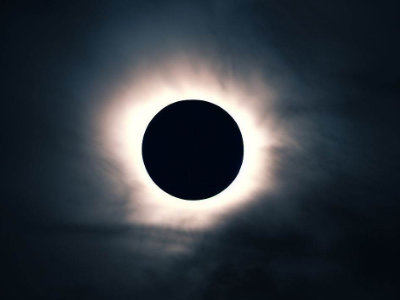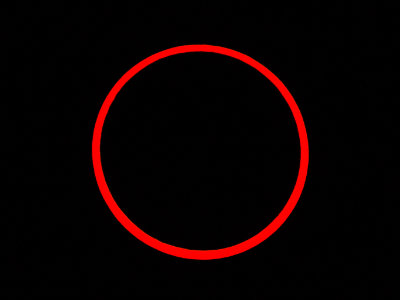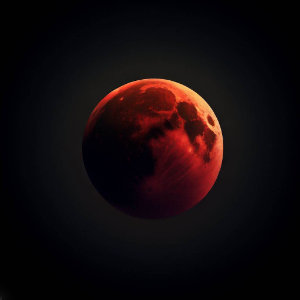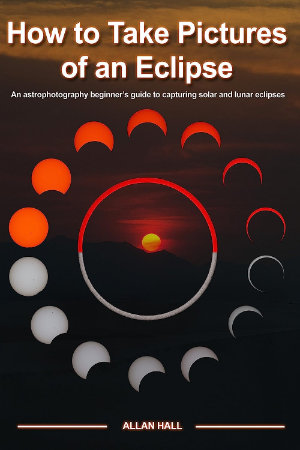
Solar eclipses are one of the most enchanting celestial events that capture the attention of millions around the globe. This comprehensive guide will delve into the marvel that is a solar eclipse, its types, its occurrence, and the science behind it. We will also discuss how to safely observe a solar eclipse and answer some commonly asked questions.
Understanding the Phenomenon of Solar Eclipses
A solar eclipse is a captivating natural phenomenon that occurs when the Moon, Earth, and Sun align in a straight line. This alignment leads to the Moon casting a shadow on Earth, temporarily blocking the Sun’s light.
In the realm of astronomy, an eclipse refers to an event where one celestial body obscures another. Typically, the term ‘eclipse’ signifies the Sun being obscured by the Moon (a solar eclipse) or the Earth blocking sunlight from reaching the Moon (a lunar eclipse).
For an eclipse to happen, the three bodies (Sun, Moon, and Earth) must align precisely. This alignment is possible only during certain moon phases – New Moon for a solar eclipse and Full Moon for a lunar eclipse.
However, these phases occur monthly, so why don’t we witness solar and lunar eclipses each month? The answer lies in the Moon’s orbit.
Delving into the Moon’s Orbit
Visualize for a moment the Earth being stationary with the Sun and Moon revolving around it. From our perspective on Earth, this is the apparent motion, leading to the belief in the geocentric “Earth-centered” model of the solar system.
In this model, the Sun seems to follow a specific path across the sky, passing through the zodiac constellations. This path is known as the ecliptic. Now, imagine this path as a hula hoop with Earth at its center.
The Moon does revolve around the Earth, so picture another hula hoop representing its orbit. However, these hoops don’t lie in the same plane. The Moon’s orbit is tilted by about five degrees relative to the Earth’s orbit.
During New Moon or Full Moon phases, the Moon typically appears above or below the Sun in our sky due to this tilt, resulting in no eclipse.
Approximately every six months, the Moon and the Sun are found near the points where the Moon’s orbit and the ecliptic intersect, known as lunar nodes. At these times, the Sun, Earth, and Moon align in a straight line, making an eclipse possible.
Types of Solar Eclipses
Depending on the alignment of the Sun, Moon, and Earth at the time of the event, we witness four different types of solar eclipses:
- Total Solar Eclipse: Occurs when the Moon fully obscures the Sun, casting a dark shadow known as the umbra on Earth.
- Partial Solar Eclipse: When the Moon doesn’t entirely block the Sun, it casts a lighter shadow called the penumbra, leading to a partial solar eclipse. Here, the Moon appears to take a “bite” out of the Sun.
- Annular Solar Eclipse: When the Moon is centered in front of the Sun but doesn’t cover the entire solar surface, it results in an annular solar eclipse or a “ring of fire” around the Moon.
- Hybrid Solar Eclipse: This rarest type of solar eclipse, also called an annular-total (A-T) eclipse, transitions between a total and annular eclipse as the Moon’s shadow moves across Earth.
Total Solar Eclipse

In a total solar eclipse, the Moon passes between the Sun and Earth, completely obscuring the Sun’s face. This type of solar eclipse occurs because the diameter of the Sun is about 400 times that of the Moon, but it’s also approximately 400 times farther away from Earth. As a result, from our perspective, the Sun and the Moon appear almost the same size in the sky, allowing the Moon to entirely block the Sun under the right conditions.
Annular Solar Eclipse

An annular solar eclipse happens when the Moon passes between the Sun and Earth when it is near its farthest point from Earth (apogee). At this distance, the Moon appears smaller than the Sun and doesn’t cover its entire face. Instead, a “ring of fire,” or annulus, is created around the Moon.
Partial Solar Eclipse
A partial solar eclipse happens when the Moon passes between the Sun and Earth when they aren’t perfectly aligned. As a result, only the penumbra (the partial shadow) passes over observers, and the Sun is partially obscured.
Hybrid Solar Eclipse
A hybrid solar eclipse, the rarest type, occurs when the Moon’s distance from Earth is near its limits for the umbra (the inner shadow) to reach Earth, and because our planet is curved. In most cases, a hybrid eclipse starts as an annular eclipse, becomes total in the middle, then returns to annular towards the end of the path.
The Science Behind Solar Eclipses
Solar eclipses are not merely captivating celestial events but are underpinned by intricate science. Let’s delve into how and why solar eclipses occur.
The Role of Lunar Nodes
When the Moon crosses the ecliptic — Earth’s orbital plane — it is known as a lunar node. The proximity of the new moon to a node determines the type of solar eclipse.
The type of solar eclipse is also influenced by the Moon’s distance from Earth and the distance between Earth and the Sun.
The Impact of the Moon’s Distance from Earth
The distance of the Moon from Earth significantly impacts the type of solar eclipse that occurs.
During a total solar eclipse, the Moon is relatively close to Earth, allowing it to fully cover the Sun.
In contrast, during an annular solar eclipse, the Moon is near its farthest point from Earth. At this distance, the Moon appears smaller than the Sun and doesn’t cover its entire face, creating a “ring of fire.”
During a partial solar eclipse, the trio of the Sun, Earth, and Moon isn’t perfectly aligned. As a result, only the penumbra (the partial shadow) passes over observers, and the Sun is partially obscured.
The Rarity of Hybrid Solar Eclipses
Hybrid solar eclipses are rare because they require specific conditions. They occur when the Moon’s distance from Earth is near its limits for the inner shadow — the umbra — to reach Earth and because the planet is curved.
Hybrid solar eclipses begin as one type of eclipse (either total or annular) and transition to another. These eclipses start as an annular eclipse because the tip of the umbra falls just short of making contact with Earth. They then become total because the roundness of the planet intercepts the shadow’s tip near the middle of the path, and finally, they return to annular towards the end of the path.
How Often Do Solar Eclipses Occur?
Approximately twice a year, we experience an eclipse season when the new moon aligns in such a way that it eclipses the sun. However, solar eclipses don’t occur every time there is a new moon phase because the moon’s orbit is tilted about 5 degrees relative to Earth’s orbit around the Sun. For this reason, the moon’s shadow usually passes either above or below Earth, preventing an eclipse from happening.
What Happens During a Solar Eclipse?
The type of solar eclipse will affect what happens and what observers will be able to see. Here’s what to expect during different types of solar eclipses:
Total Solar Eclipse
During a total solar eclipse, the sky darkens dramatically. Observers equipped with the correct safety gear may be able to see the sun’s outer atmosphere, known as the corona. This makes for an exciting viewing experience as the corona is usually obscured by the bright face of the Sun.
Annular Solar Eclipse
During an annular solar eclipse, the Moon doesn’t fully obscure the face of the Sun, as is the case in a total eclipse. Instead, it dramatically appears as a dark disk obscuring a larger bright disk, giving the appearance of a ring of light around the Moon. These eclipses are aptly known as “ring of fire” eclipses.
Partial Solar Eclipses
Partial solar eclipses appear as if the Moon is taking a “bite” out of the Sun. As the trio of the Sun, Earth, and Moon is not perfectly lined up, only part of the Sun will appear to be obscured by the Moon. When a total or annular solar eclipse occurs, observers outside the area covered by the Moon’s umbra (the inner shadow) will see a partial eclipse instead.
Hybrid Solar Eclipse
During a hybrid solar eclipse, observers will see either an annular or total solar eclipse depending on where they are located.
Expert Insights on Solar Eclipses
One of my favorite resources is Allan Hall’s eclipse information over at allans-stuff.com. He has imaged a few eclipses and his articles are not just informative, but a lot of fun to read. He has also published the book shown above. If you are going to go see a solar eclipse in person, his book is a good investment.
What Happens During a Solar Eclipse?
During a solar eclipse, a New Moon obscures some or all of the sun. A partial solar eclipse is a mildly interesting event that must be observed using eye protection and solar filters. A total solar eclipse is a far grander and more nuanced spectacle. As the last sliver of sunlight is still visible, the temperature crashes, twilight takes hold and once it’s 100% eclipsed the sun’s white corona is revealed to the naked eye. It’s a powerful, even life-changing experience.
The Difference Between a Solar Eclipse and a Lunar Eclipse

During a solar eclipse, a New Moon gets in between Earth and the Sun, and the Sun’s light is partially or totally blocked. During a lunar eclipse, the Earth is between the Sun and a Full Moon, so the Moon is in Earth’s shadow. The only light that reaches the lunar surface is first filtered through Earth’s atmosphere — it’s as if a thousand sunsets are projected onto its surface simultaneously, turning it an orangey-copper color.
The Difference Between a Central and Partial Solar Eclipse
When the Moon crosses the Sun, a cone-shaped shadow trails behind the Moon. When the tip of that cone just misses Earth, a partial solar eclipse is visible. When the tip touches Earth’s surface, it creates a narrow dark shadow from which it’s possible to see a total solar eclipse. On either side of that ‘path of totality,’ a partial solar eclipse is visible.
When is the Next Solar Eclipse?
The next solar eclipse as of this writing will be an annular or “ring of fire” solar eclipse on Oct. 14, 2023 and will be visible across North America, Central America, and most of South America.
The point of greatest eclipse — where viewers could see a ring of fire lasting 5 minutes and 17 seconds — will occur off the coast of Nicaragua and Costa Rica.
For more information on how and where to see the “ring of fire” solar eclipse, check out the annular solar eclipse 2023 guide.
The Risks of Solar Eclipses
Solar eclipses can be dangerous if not observed safely. Never look directly at the sun without proper eye protection. It is never safe to look directly at the Sun’s rays, even if the Sun is partly obscured because they contain harmful ultraviolet (UV) and infrared (IR) rays that can damage your eye’s retina and even cause blindness.
Never use regular sunglasses to observe the Sun. The only safe way to look directly at the Sun is through specially designed solar filters, using solar eclipse glasses for direct viewing and solar filters for telescopes and binoculars.
A safe way to observe a solar eclipse is to construct a “pinhole camera.” A pinhole or small opening is used to form an image of the Sun on a screen placed about 3 feet (or about 1 meter) behind the opening. Binoculars or a good telescope mounted on a tripod can also be used to project a magnified image of the Sun onto a white card. The farther away from the card, the larger you can focus the image. Look for sunspots. Notice that the Sun appears somewhat darker around its limb or edge. This method of solar viewing is safe so long as you remember not to look through the binoculars or telescope when they are pointed toward the sun; put another way, never look directly at the Sun when any part of its blindingly bright surface is visible.
A variation on the pinhole theme is the “pinhole mirror.” Cover a pocket mirror with a piece of paper that has a ¼-inch (7 mm) hole punched in it. Open a sun-facing window and place the covered mirror on the sunlit sill so it reflects a disk of light onto the far wall inside. The disk of light is an image of the Sun’s face. The farther away from the wall the better; the image will be only 1 inch across for every 9 feet (or 3 centimeters for every 3 meters) from the mirror. Modeling clay works well to hold the mirror in place. Experiment with different-sized holes in the paper. Again, a large hole makes the image bright, but fuzzy, and a small one makes it dim but sharp. Darken the room as much as possible. Be sure to try this out beforehand to make sure the mirror’s optical quality is good enough to project a clean, round image. Of course, don’t let anyone look at the Sun in the mirror.
Resources for Further Exploration
If you’re intrigued by solar eclipses and want to delve deeper into this fascinating subject, here are some additional resources:
- NASA’s eclipse website offers a concise summary of solar eclipses through to 2030.
- Eclipse Wise is a dedicated website for predictions of eclipses.

